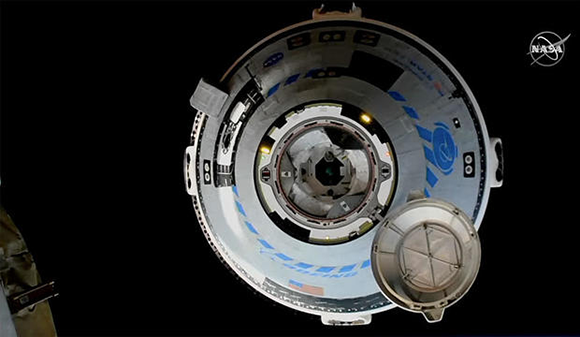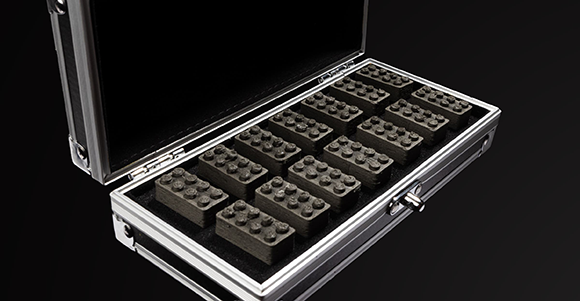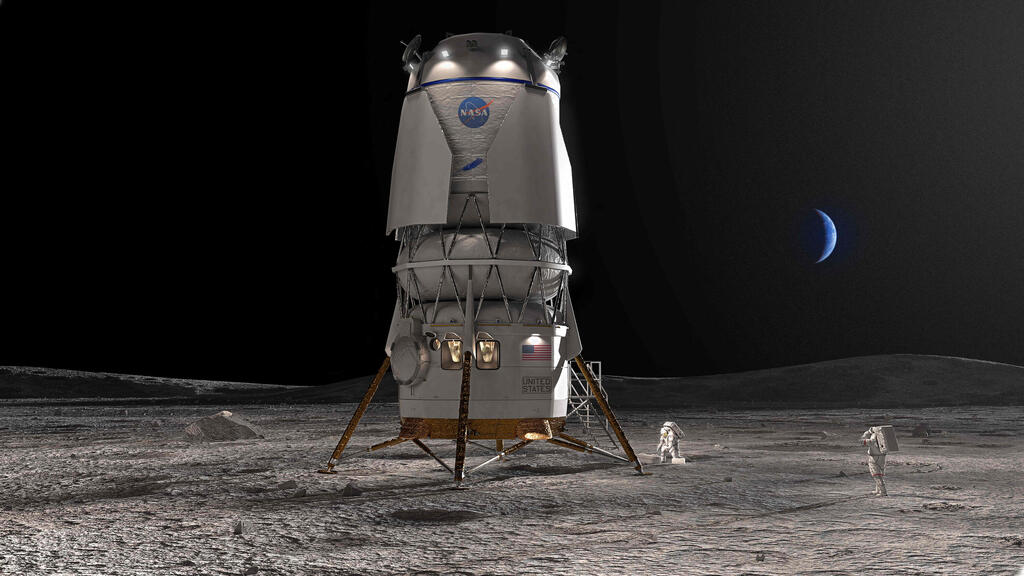Getting your Trinity Audio player ready...
On the way to the Moon via Mitzpe Ramon
Five Israeli startups have been selected to participate in the EXPAND program, an accelerator led by Creation-Space and the Tech7 innovation community. These companies will receive business and professional support to develop space-related ventures, with the aim of submitting proposals for NASA’s Artemis program, which intends to return humans to the moon in the coming years.
Selected from over fifty applicants, these startups will undergo a summer mentorship program where they will receive guidance from global experts on crafting business plans in the space sector, attracting investors, working with authorities to navigate regulatory frameworks, and more. In September, they are expected to present their outcomes at an event attended by investors and Israeli space community representatives.
The winning startup will be awarded a 100,000 shekel grant to further develop their product. Additionally, all five companies will continue to receive professional support from the accelerator team for about a year, alongside the launch of the program's second cycle for additional participant companies. Partners in operating the accelerator initiative include JNF USA, the American investment fund CreationsVC, and the Israel Space Agency, which accompanies the project.
The selected companies are Tedence Space, which is developing an innovative medical platform for diagnosing diseases and medical conditions based on measurements of very weak magnetic and electric fields; Omnidrill, which is developing robotic technologies for underground operations; Inhayle, which is developing technologies for surface disinfection applicable to hospitals and other places such as space stations; NOVAlert, which is developing sensors embedded in clothing, not found in direct contact with the body, to can alert to physiological conditions such as medical events or fatigue; and OASIX, which is developing thermal storage solutions for building climate control.
"The space sector in Israel has recently begun to expand beyond satellite expertise, and we are seeing the beginnings of activity in developing technologies that support deep space exploration and human life beyond Earth. It is no longer just about exciting scientific adventures but also a tremendous opportunity for technological and social advancement," said Dr. Roy Naor, CEO of Creation-Space. "Israel, with its unique capabilities and entrepreneurial spirit, can play a central role in the global effort that is so important for the future of humanity."
Boeing's troubles in space
Boeing's Starliner spacecraft has indeed reached the International Space Station on its maiden manned flight, but the numerous issues that accompanied it remain unresolved. As a result, its return to Earth has been postponed until at least June 26. The spacecraft, which brought NASA astronauts, Barry Wilmore and Sunita Williams, to the ISS, encountered a helium leak even before launch. Nevertheless, Boeing and the American space agency opted to proceed with the launch. Further leaks were discovered during the journey to the station. Originally planned for a week-long stay, Starliner will now remain at the station for about three weeks, if there are no further delays, in the hope that Boeing and NASA engineering teams will find a solution to the leak problem.
Helium is utilized for pressurizing the fuel in the spacecraft's orientation thrusters, which allow the spacecraft to rotate around its axes and orient it to the correct angle. In microgravity, the fuel floats in the tank, necessitating the injection of inert gasses like helium to pressurize it towards the outlet pipe without reacting chemically with the fuel. A significant helium leak could potentially compromise the spacecraft's maneuverability. However, the spacecraft is equipped with no fewer than 28 such thrusters, and only five of them did not function during the flight to the space station. Four were shut down due to the helium leak and one due to another malfunction.
"We want to give our teams a little bit more time to look at the data, do some analysis and make sure we're really ready to come home," said Steve Stich, manager of NASA's Commercial Crew Program. He added that the four leaking thrusters have been restored to working order, and that everyone "feels very confident” to rely on them for the remainder of the flight.
3 View gallery


Wanting more time to review the data. Boeing's manned Starliner spacecraft approaching docking at the International Space Station
(Photo: NASA)
Boeing Vice President and program manager of its commercial crew program Mark Nappi also said that the thrusters are now operational and noted that this is a test flight of the spacecraft. Therefore, keeping it at the space station for a longer period of time is "an opportunity to fully understand the system's performance and without the pressure of schedule or time." He noted that, aside from addressing the leak issue, the spacecraft has already achieved 77 out of 87 test mission objectives and that the remaining ten will be assessed during the undocking and landing stages.
The black hole that came to life - The awakening of SDSS1335+0728
The distant galaxy SDSS1335+0728, positioned about 300 million light-years away, received little attention from astronomers until about five years ago. In December 2019, scientists observed a sudden increase in its brightness, which has persisted since. Repeated measurements and comparisons with older data confirmed a substantial and sudden surge not only in visible light but also in emissions: it now radiates twice as much infrared and four times as much ultraviolet radiation. Moreover, recent observations have detected a tenfold rise in its X-ray emissions over the past few months.
A team of scientists investigating the phenomenon at the European Southern Observatory (ESO) attribute the sudden brightening to the activity of the supermassive black hole at the center of the galaxy, with a mass millions of times greater that of our Sun. As the black hole engulfs surrounding material, the acceleration of gas and dust it draws in causes radiation emission. The researchers note that this is not a one-time event of a star being consumed by the black hole, as such events typically last for tens or at most a few hundred days, while this galaxy has maintained its luminosity for over four years.
While instances of “dormant” galaxies reactivating have been observed in the past, this marks the first time such an event has been captured in "real time," despite occurring hundreds of millions of years ago, allowing us to study it in depth.
Awakening of a supermassive black hole
Building with Lego in space
If humanity indeed advances to extended stays on the moon, there will be a pressing need to develop housing solutions there. One possible approach is to utilize local materials, and perhaps the key to this will be to mold these materials into a convenient shape that any child could use to build houses and a variety of other modular structures. Drawing inspiration from traditional Lego bricks, the European Space Agency (ESA) recently embarked on a project to create “space Lego” bricks —so far, just limited quantities of bricks.
Given the scarcity of actual lunar soil on Earth, originating primarily from samples collected by the Apollo spacecraft, Russian unmanned spacecraft, and more recently, Chinese spacecraft (one of which is still on its way to Earth), researchers opted to use powder from a meteorite discovered in North Africa in 2000. They mixed this powder with a lunar soil simulant—a mixture of materials produced on Earth mimicking the composition of lunar soil, or regolith, based on samples collected there.
These two were mixed with a biodegradable polymer called polylactide, and the entire mixture was placed in a 3D printer. The result is a simulation of Lego bricks made out of lunar soil, which could also be adapted for on-site construction on the moon itself, using local soil resources, potentially offering viable housing assembly options.
"My team and I love creative construction and had the idea to explore whether space dust could be formed into a brick similar to a LEGO brick, so we could test different building techniques," said Aidan Cowley, the science officer of the European Space Agency. "The result is amazing, and while the bricks may look a little rougher than usual, importantly the clutch power still works, enabling us to play and test our designs."
3 View gallery


Asteroid powder, a simulation of lunar soil, and polymer. The space bricks from the European Space Agency
(Photo: LEGO)
While the initial batch of space Lego bricks remains non-commercial, their commercial potential hasn't escaped Lego's notice. Several bricks will be showcased this summer at Lego stores across the United States, Canada, Western Europe, and Australia, likely generating considerable interest.


